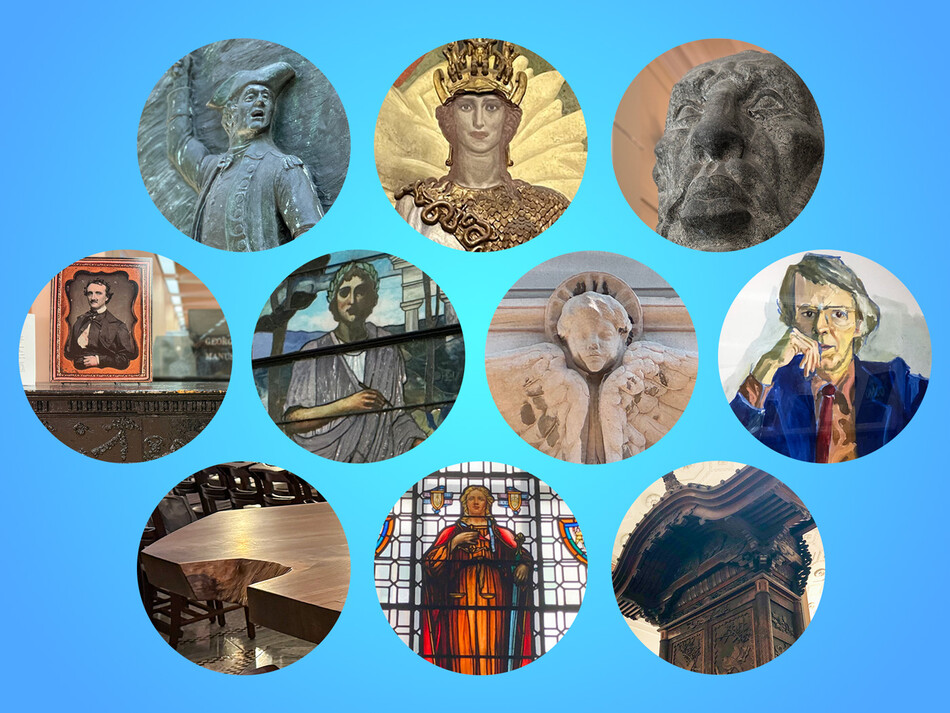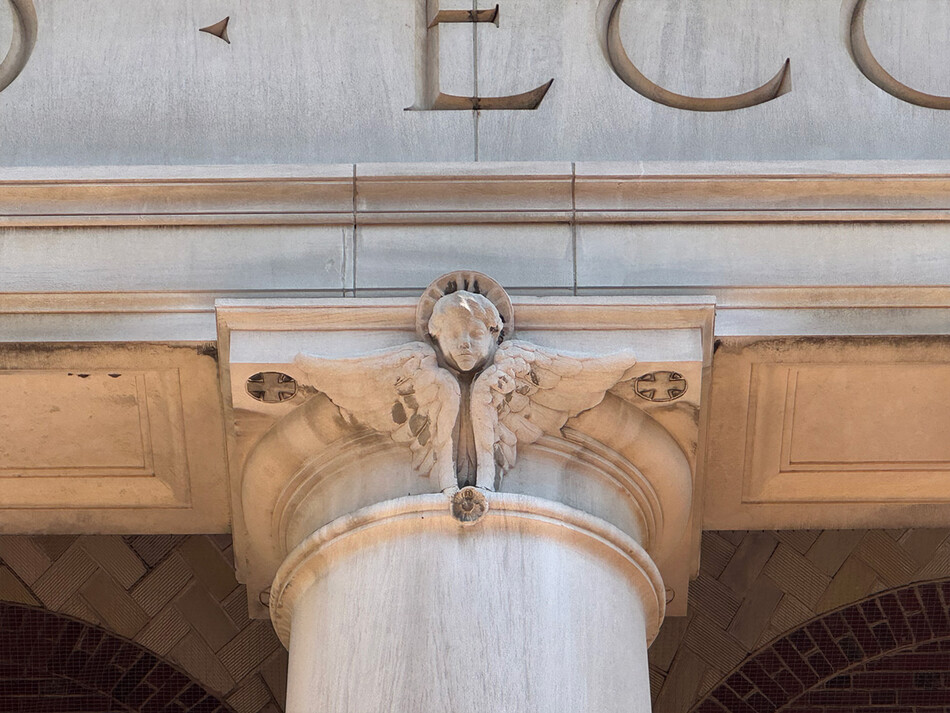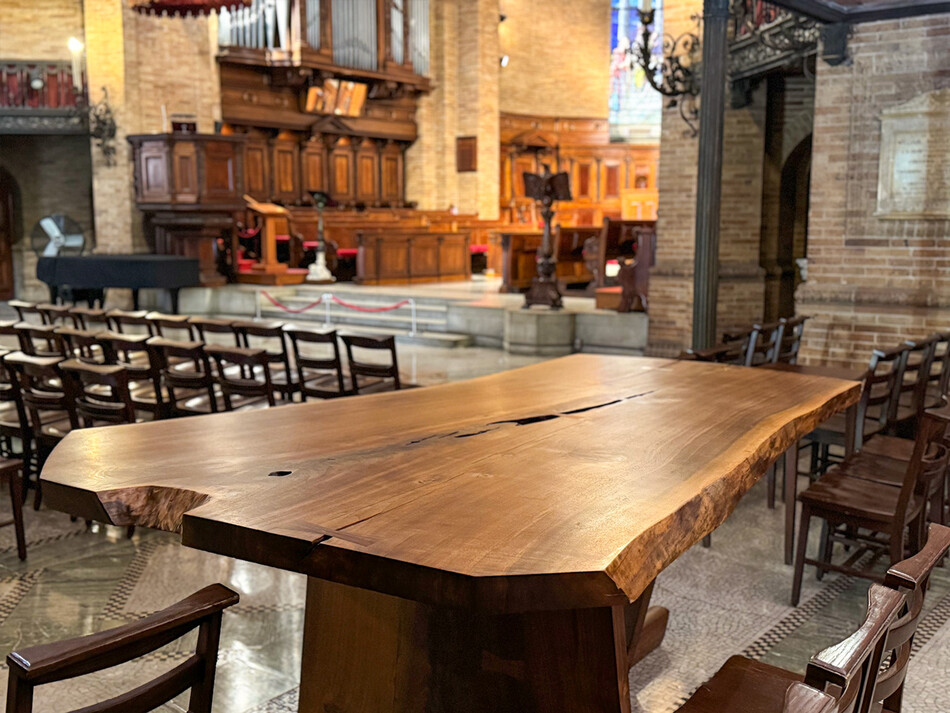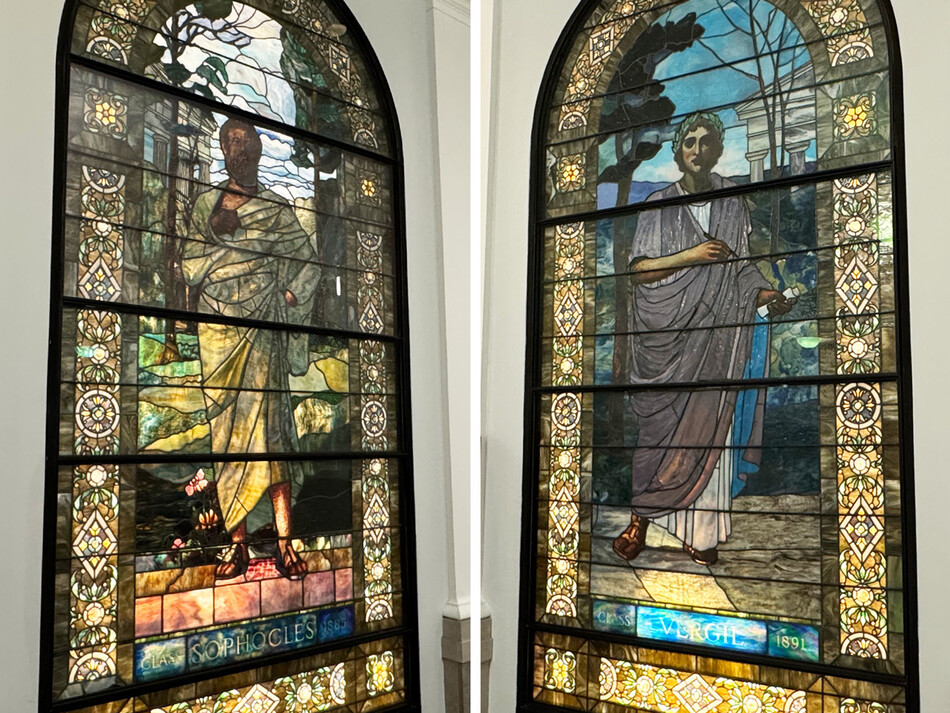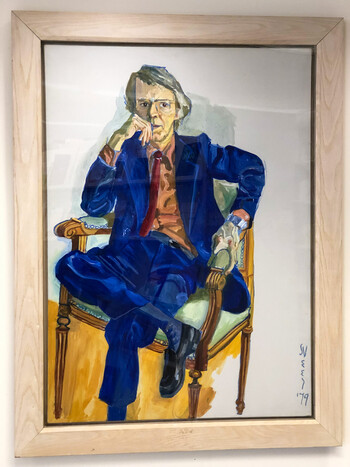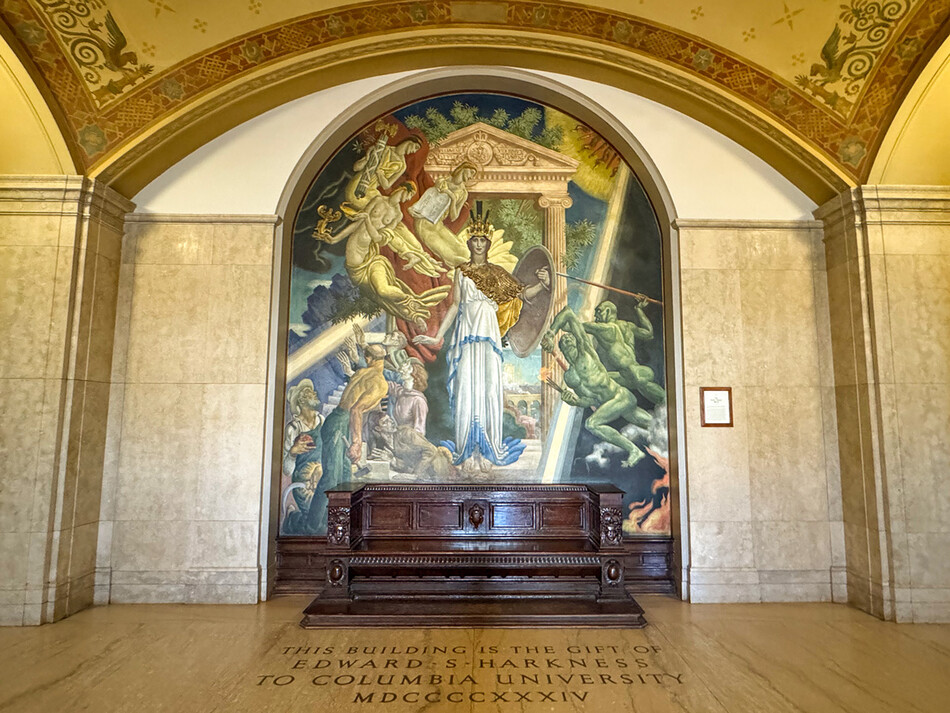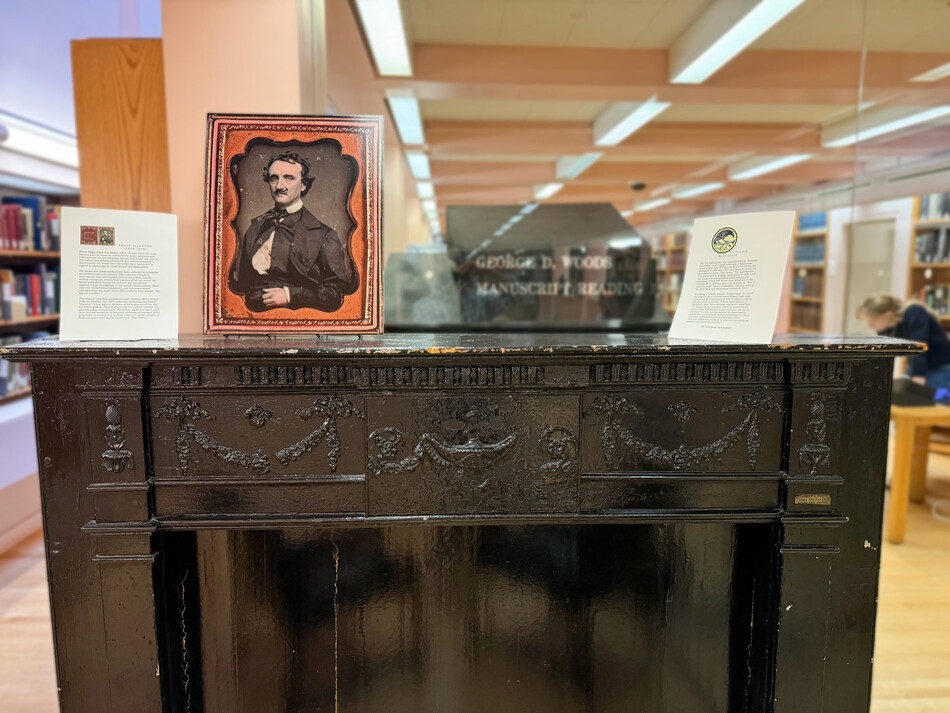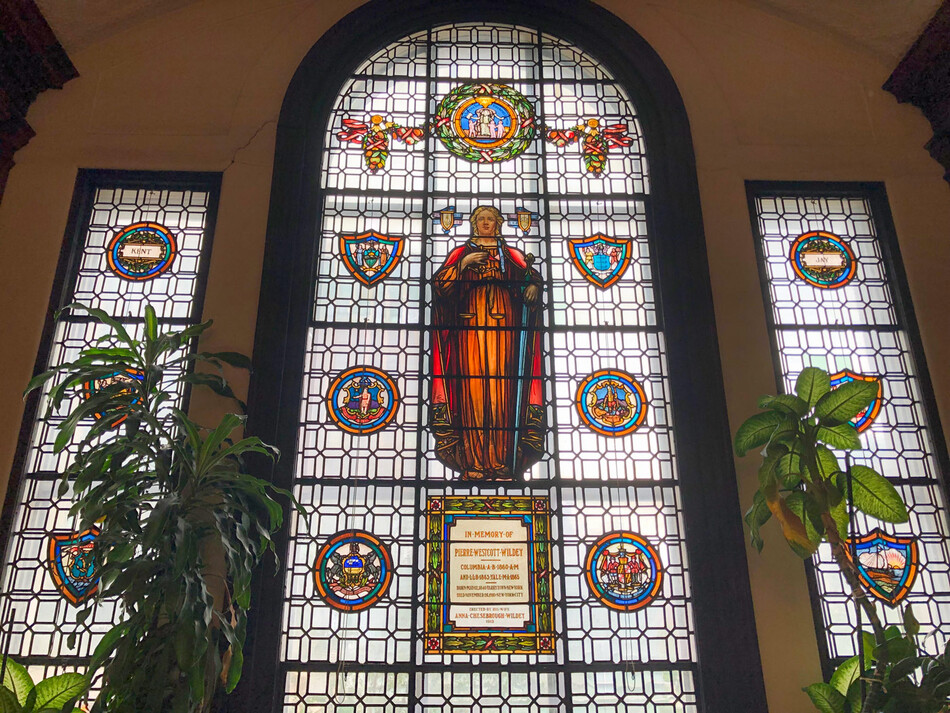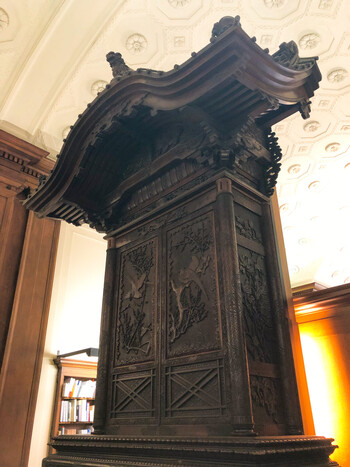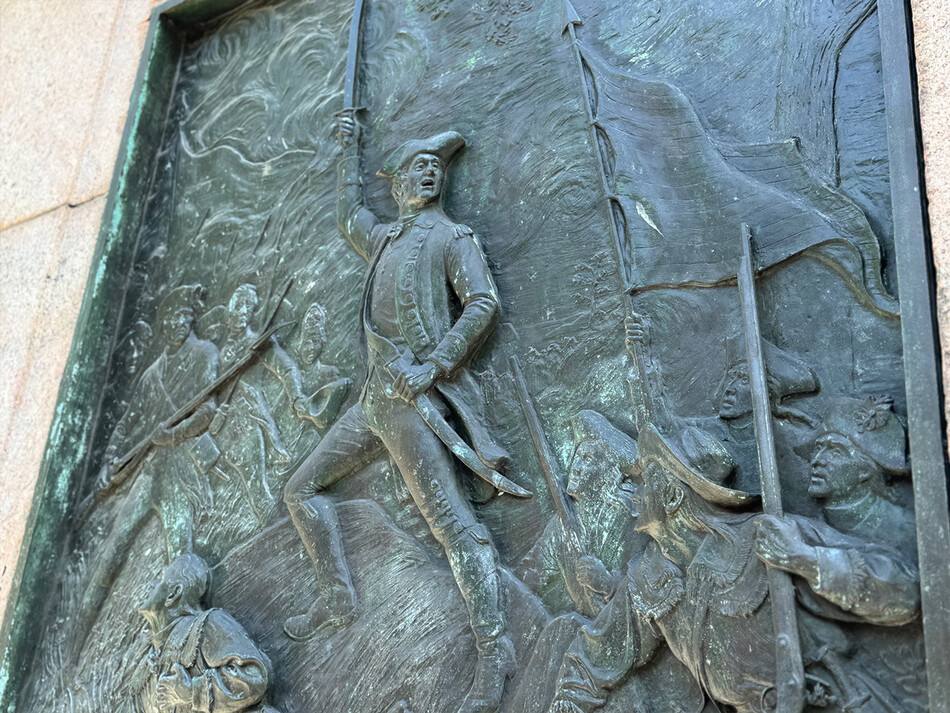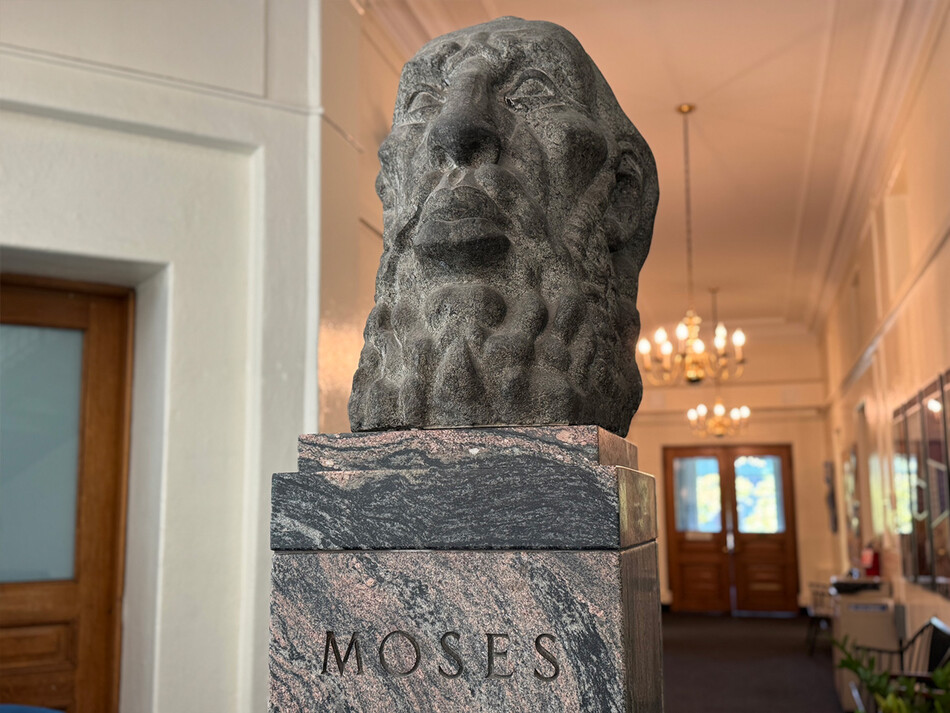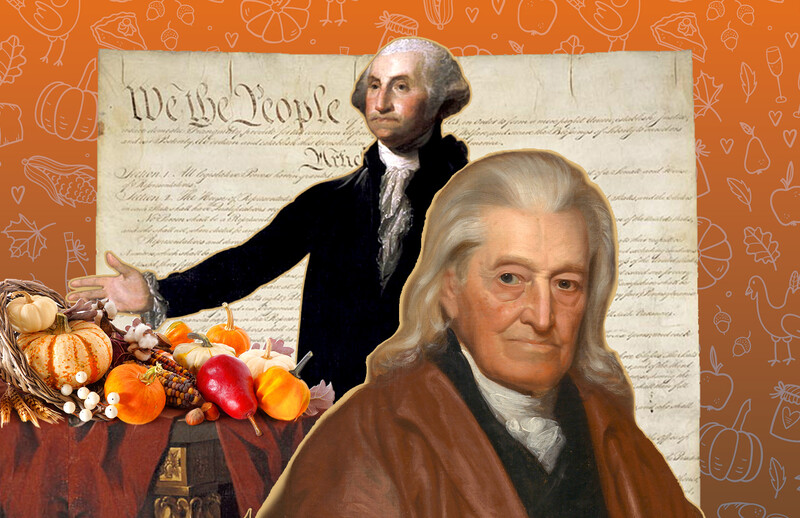Though it’s best known for education and research, Columbia is also a museum of sculptures, memorials, stained glass, decorative furnishings, and other objects that enrich campus buildings and outdoor spaces. Here are ten notable artworks you might not know about.
St. Paul’s Chapel Cherubs
Before he rose to international fame as the artist behind Mount Rushmore, Gutzon Borglum made a living as a sculptor for the Cathedral of St. John the Divine and other New York City institutions. In the early 1900s, he worked on the Beaux-Arts exterior of Columbia’s St. Paul’s Chapel, sculpting a cherub face for the top each of portico column.
Nakashima Peace Altar
Inside St. Paul’s Chapel, you can find the George Nakashima Peace Altar, a wooden plaque commemorating alumni who have died in war service. Donated in 1995 by Asian studies professor Wm. Theodore de Bary ’41CC, ’53GSAS, ’94HON and Fanny de Bary ’43BC, the 1960s polished-oak slab is the work of George Nakashima, a craftsman and architect known for his signature blend of Japanese and American design.
Nakashima, who spent time in an internment camp during World War II, completed several commissions for the Columbia campus during his lifetime, including furnishings for the Heyman Center of Humanities and the Student and Faculty Lounge in Kent Hall.
Hamilton Hall Tiffany Windows
These stained-glass portraits of Sophocles and Vergil, crafted by Tiffany Studios around the turn of the twentieth century, were long hidden in storage before their rediscovery by Columbia College dean Austin E. Quigley in the early 2000s. Since 2003, the windows have hung in Hamilton Hall, home to the College’s administrative offices.
Portrait of Jack Beeson
Alice Neel’s 1979 painting of her friend Jack Beeson, the Columbia music professor and composer known for writing Lizzie Borden and other operas, currently hangs in Dodge Hall’s Gabe M. Wiener Music and Arts Library after being donated by Neel’s estate in 1999.
Videbimus Lumen Mural
Eugene Francis Savage’s 1934 mural near the entrance of Butler Library visualizes Columbia’s motto, “in thy light shall we see light,” with the Greek goddess Athena surrounded by images representing knowledge and modern industry.
“The Raven” Mantel
A Victorian mantelpiece from the Upper West Side boarding room where Edgar Allan Poe wrote “The Raven” was acquired by Columbia in 1908. Held in Low Library until 1974, the mantel now resides in the Rare Book & Manuscript Library on the sixth floor of Butler, along with an original manuscript of “Annabel Lee” and other items from Columbia’s Edgar Allan Poe collection.
East Asian Library Stained Glass
In Kent Hall’s C.V. Starr East Asian Library, a stained-glass window depicting a goddess of justice is a reminder of the building’s past life as home to Columbia Law School. Today, the figure casts its judicial gaze over rows of Chinese, Japanese, and Korean texts.
Japanese Pavilion Cabinet
The C.V. Starr East Asian Library also houses an ornate wooden cabinet originally displayed in the Japanese Pavilion at the 1893 World’s Fair in Chicago. Originally modeled after a seventeenth-century work at the mausoleum of shōgun Tokugawa Ieyasu in Nikko, Japan, the cabinet now serves as a relic of the bygone global-exhibition era.
Battle of Harlem Heights Plaque
Installed in 1897, this bronze bas-relief by James Edward Kelly attached to the exterior of Mathematics Hall, facing Broadway, commemorates the American Revolution’s 1776 Battle of Harlem Heights, which is believed to have taken place in part on the future site of the Morningside Heights campus.
Moses Sculpture
Enter Earl Hall and be greeted by the granite head of Moses, by Lithuanian-American artist William Zorach. Sculpted in 1953 and donated to Columbia three years later, the statue reflects the artist’s shift from Cubist painting to modern sculpture. Zorach’s other works can be found at the Metropolitan Museum of Art, the National Gallery of Art, and in other major collections.
